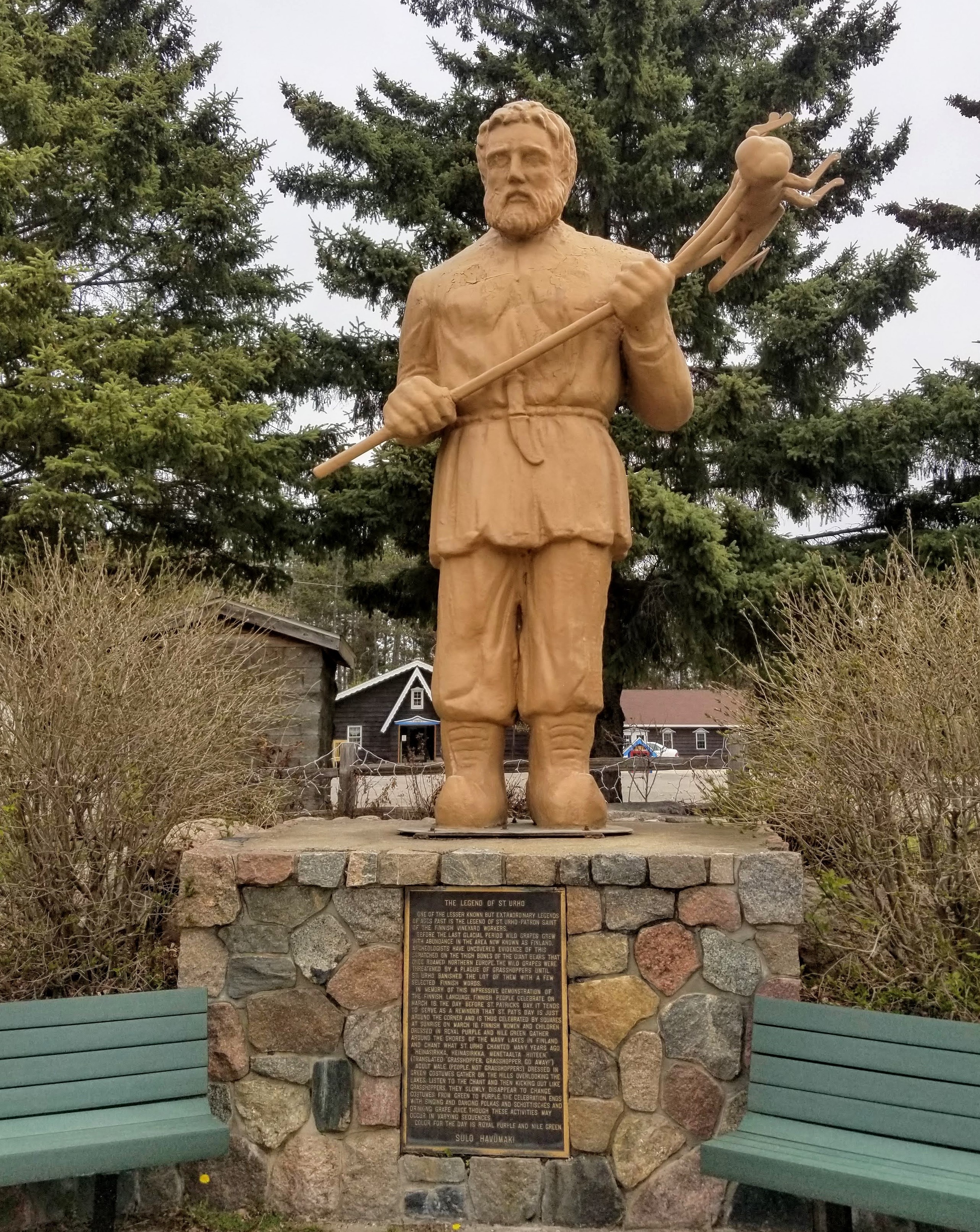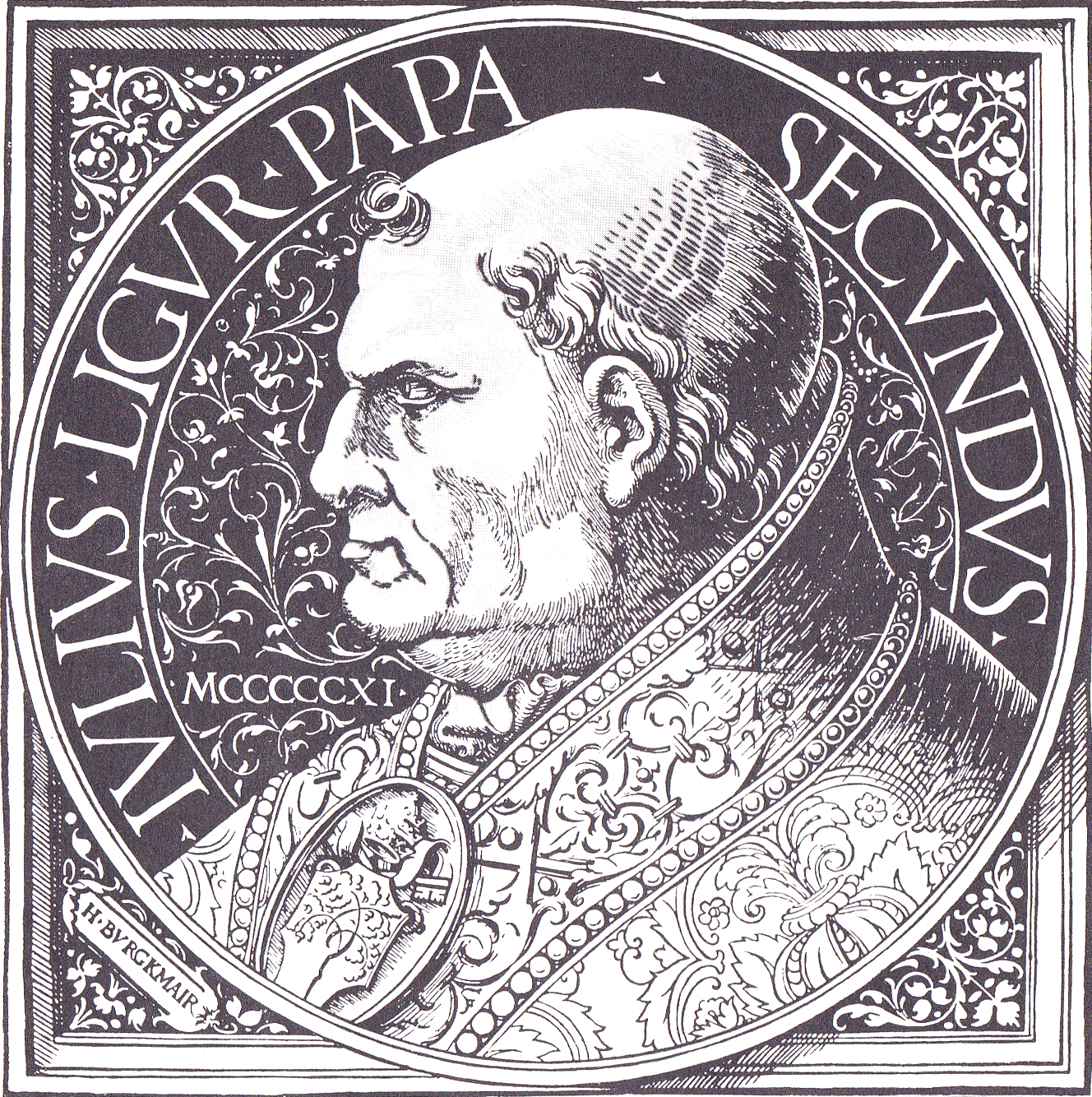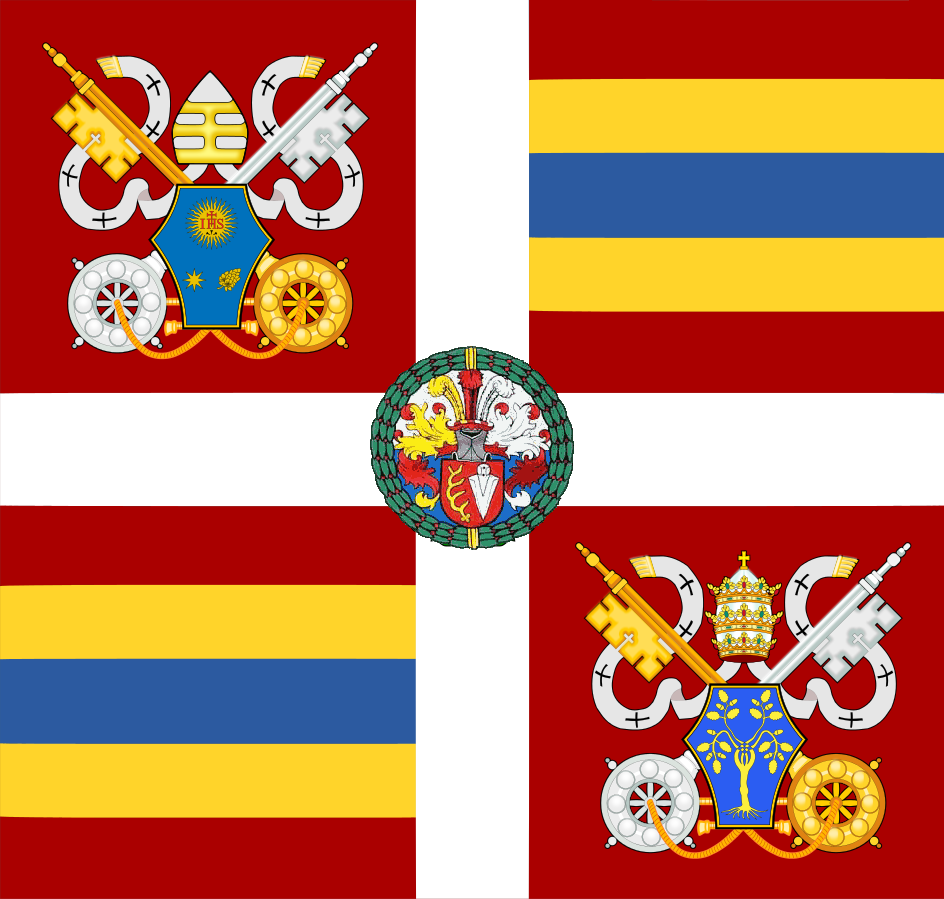|
1506
Year 1506 (Roman numerals, MDVI) was a common year starting on Thursday of the Julian calendar. Events January–March * January 14 – The Classical antiquity, classical statue of ''Laocoön and His Sons'' is unearthed in Rome. On the recommendation of Giuliano da Sangallo and Michelangelo, Pope Julius II purchases it, and places it on public display in the Vatican Museums, Vatican a month later. * January 22 – The Swiss Guard arrives at the Vatican City, Vatican, to serve as permanent ceremonial and palace guards under Pope Julius II. * February 9 – Henry VIII, Henry, Prince of Wales is made a Knight of the Golden Fleece by Maximilian I, Holy Roman Emperor. * February 15 – Iye Roy Mackay, 10th of Strathnaver, Iye Roy Mackay, Chief of Scotland's Clan Mackay, records his 1504 grant of six lands in what is now the County Sutherland, and starts a feud with Euphemia II, Countess of Ross. * March 16 – Battle of Cannanore: Portugal's fleet (com ... [...More Info...] [...Related Items...] OR: [Wikipedia] [Google] [Baidu] |
February 15
Events Pre-1600 * 438 – Roman emperor Theodosius II publishes the law codex Codex Theodosianus * 590 – Khosrau II is crowned king of Persia. * 706 – Byzantine emperor Justinian II has his predecessors Leontios and Tiberios III publicly executed in the Hippodrome of Constantinople. * 1002 – At an assembly at Pavia of Lombard nobles, Arduin of Ivrea is restored to his domains and crowned King of Italy. * 1113 – Pope Paschal II issues '' Pie Postulatio Voluntatis'', recognizing the Order of Hospitallers. * 1214 – During the Anglo-French War (1213–1214), an English invasion force led by John, King of England, lands at La Rochelle in France. * 1493 – While on board the '' Niña'', Christopher Columbus writes an open letter (widely distributed upon his return to Portugal) describing his discoveries and the unexpected items he came across in the New World. 1601–1900 * 1637 – Ferdinand III becomes Holy Roman Emper ... [...More Info...] [...Related Items...] OR: [Wikipedia] [Google] [Baidu] |
March 16
Events Pre-1600 * 1190 – Massacre of Jews at Clifford's Tower, York. * 1244 – Over 200 Cathars who refuse to recant are burnt to death after the Fall of Montségur. * 1355 – Amidst the Red Turban Rebellions, Han Lin'er, a claimed descendant of Emperor Huizong of Song, is proclaimed emperor of the restored Song dynasty in Bozhou. 1601–1900 * 1621 – Samoset, an Abenaki, visits the settlers of Plymouth Colony and greets them, "Welcome, Englishmen! My name is Samoset." *1660 – The Long Parliament of England is dissolved so as to prepare for the new Convention Parliament. * 1696 – The Dutch bombard Givet during the Nine Years' War. *1792 – King Gustav III of Sweden is shot; he dies on March 29. * 1802 – The Army Corps of Engineers is established to found and operate the United States Military Academy at West Point. * 1815 – Prince Willem proclaims himself King of the United Kingdom of the Netherlands, the first c ... [...More Info...] [...Related Items...] OR: [Wikipedia] [Google] [Baidu] |
Battle Of Cannanore
The Battle of Cannanore took place in 1506 off the harbour of Cannanore in India, between the Indian fleet of the Zamorin of Calicut and a Portuguese fleet under Lourenço de Almeida, son of the Viceroy Almeida. The Indian fleet, consisting of about 200 ships equipped with cannons manufactured with the help of two Milanese Italians, was manned by Hindu, Arab, and Turkish crews. This encounter ended in a Portuguese victory. It was followed by another Portuguese success at the siege of Cannanore in 1507, but then a Portuguese defeat at the Battle of Chaul in 1508.''Foundations of the Portuguese empire, 1415–1580'' Bailey Wallys Diffie p.232''ff'/ref> See also * Portuguese India The State of India, also known as the Portuguese State of India or Portuguese India, was a state of the Portuguese Empire founded seven years after the discovery of the sea route to the Indian subcontinent by Vasco da Gama, a subject of the ... References {{coord missing, Kerala ... [...More Info...] [...Related Items...] OR: [Wikipedia] [Google] [Baidu] |
Laocoön And His Sons
The statue of ''Laocoön and His Sons'', also called the Laocoön Group (), has been one of the most famous ancient sculptures since it was excavated in Rome in 1506 and put on public display in the Vatican Museums, where it remains today. The statue is very likely the same one praised in the highest terms by Pliny the Elder, the main Roman writer on art, who attributed it to Greek sculptors but did not say when it was created. The figures are nearly life-sized, with the entire group measuring just over in height. The sculpture depicts the Troy, Trojan priest Laocoön and his sons Antiphantes and Thymbraeus being attacked by sea serpents. The Laocoön Group has been called "the prototypical icon of human agony" in Art of Europe, Western art. Unlike the agony often portrayed in Christian art depicting the Passion of Jesus and martyrs, the suffering here suggests neither redemption or reward. The agony is conveyed through the contorted facial expressions, particularly Laocoön's bu ... [...More Info...] [...Related Items...] OR: [Wikipedia] [Google] [Baidu] |
Pope Julius II
Pope Julius II (; ; born Giuliano della Rovere; 5 December 144321 February 1513) was head of the Catholic Church and ruler of the Papal States from 1503 to his death, in February 1513. Nicknamed the Warrior Pope, the Battle Pope or the Fearsome Pope, it is often speculated that he had chosen his papal name not in honor of Pope Julius I but in emulation of Julius Caesar. One of the most powerful and influential popes, Julius II was a central figure of the High Renaissance and left a significant cultural and political legacy. As a result of his policies during the Italian Wars, the Papal States increased their power and centralization, and the office of the papacy continued to be crucial, diplomatically and politically, during the entirety of the 16th century in Italy and Europe. In 1506, Julius II established the Vatican Museums and initiated the rebuilding of the St. Peter's Basilica. The same year he organized the famous Swiss Guard for his personal protection and commanded a su ... [...More Info...] [...Related Items...] OR: [Wikipedia] [Google] [Baidu] |
Knight Of The Golden Fleece
This article contains a list of knights of the Order of the Golden Fleece. Burgundian Golden Fleece 15th century !Year of induction!!Name!!Born!!Died!!Notes , - , rowspan=25, 1430, , Philip the Good, Duke of Burgundy, , 1396, , 1467, , Founder and First Head of the Order , - , Guillaume de Vienne, Seigneur de Saint-George, , 1360, , 1435, , , - , Regnier Pot, Seigneur de la Prugne, , ?, , 1432, , , - , Jehan, Seigneur de Roubaix, , 1369, , 1449, , , - , Roland d'Uutkercke, Seigneur de Hemsrode, , ?, , 1442, , , - , Antoine de Vergy, Comte de Dammartin, , ?, , 1439, , , - , David de Brimeu, Seigneur de Ligny, , ?, , 1451, , , - , Hue de Lannoy, Seigneur de Santes, , 1384, , 1456, , , - , Jehan, Seigneur de Comines, , ?, , 1442, , , - , Antoine de Toulonjon, , ?, , 1432, , Marshal of Burgundy , - , Pierre de Luxembourg, Comte de Saint-Pol, , 1390, , 1433, , , - , Jehan de la Trémoille, Seigneur de Jonvelle, ... [...More Info...] [...Related Items...] OR: [Wikipedia] [Google] [Baidu] |
Swiss Guard
The Pontifical Swiss Guard,; ; ; ; , %5BCorps of the Pontifical Swiss Guard%5D. ''vatican.va'' (in Italian). Retrieved 19 July 2022. also known as the Papal Swiss Guard or simply Swiss Guard,Swiss Guards , History, Vatican, Uniform, Requirements, Weapons, & Facts , Britannica is an armed forces, guard of honour, and protective security unit, maintained by the Holy See to protect the Pope and the Apostolic Palace within the territory of the Vatican City State. Established in 1506 under Pope Julius II, it is among the List of oldest military units and formations in continuous operation, oldest military units in continuous operation and is sometimes called "the world's smallest army". The Swiss Guard is recognised by its Renaissance-era Full dress uniform, dress uniform, consisting of a tunic striped in red, dark blue, and yellow; high plumed helmet; and traditional weapons such as the halberd. Guardsmen perform their protective duties in functional attire and with modern fire ... [...More Info...] [...Related Items...] OR: [Wikipedia] [Google] [Baidu] |
Maximilian I, Holy Roman Emperor
Maximilian I (22 March 1459 – 12 January 1519) was King of the Romans from 1486 and Holy Roman Emperor from 1508 until his death in 1519. He was never crowned by the Pope, as the journey to Rome was blocked by the Venetians. He proclaimed himself elected emperor in 1508 at Trent, with Pope Julius II later recognizing it. This broke the tradition of requiring a papal coronation for the adoption of the Imperial title. Maximilian was the only surviving son of Frederick III, Holy Roman Emperor, and Eleanor of Portugal. From his coronation as King of the Romans in 1486, he ran a double government, or ''Doppelregierung'' with his father until Frederick's death in 1493. Maximilian expanded the influence of the House of Habsburg through war and his marriage in 1477 to Mary, Duchess of Burgundy. However, he also lost his family's lands in Switzerland to the Swiss Confederacy. Through the marriage of his son Philip the Handsome to eventual queen Joanna of Castile in 1496, Maxim ... [...More Info...] [...Related Items...] OR: [Wikipedia] [Google] [Baidu] |
Vatican Museums
The Vatican Museums (; ) are the public museums of the Vatican City. They display works from the immense collection amassed by the Catholic Church and the papacy throughout the centuries, including several of the best-known Roman sculptures and most important masterpieces of Renaissance art in the world. The museums contain roughly 70,000 works, of which 20,000 are on display, and currently employs 640 people who work in 40 different administrative, scholarly, and restoration departments. Pope Julius II founded the museums in the early 16th century. The Sistine Chapel, with its ceiling and altar wall decorated by Michelangelo, and the Stanze di Raffaello (decorated by Raphael) are on the visitor route through the Vatican Museums, considered among the most canonical and distinctive works of Western and European art. In 2024, the Vatican Museums were visited by 6.8 million people. They ranked second in the list of most-visited art museums and museums in the world after the L ... [...More Info...] [...Related Items...] OR: [Wikipedia] [Google] [Baidu] |
Clan Mackay
Clan Mackay ( ; ) is an ancient and once-powerful Scottish Highlands, Highland Scottish clan from the far north of the Scottish Highlands, but with roots in the old Mormaer of Moray, Kingdom of Moray. They supported Robert I of Scotland, Robert the Bruce during the Wars of Scottish Independence in the 14th century. In the centuries that followed they were anti-Jacobitism, Jacobite. The territory of Clan Mackay consisted of the parishes of Farr, Sutherland, Farr, Tongue, Highland, Tongue, Durness and Eddrachillis, and was known as Strathnaver, in the north-west of the county of Sutherland. However, it was not until 1829 that Strathnaver was considered part of Sutherland, when the chief sold his lands to the Earl of Sutherland, Earls of Sutherland and the Highland Clearances then had dire consequences for the clan. In the 17th century the Mackay chief's territory had extended to the east to include the parish of Reay in the west of the neighbouring county of Caithness. The chief ... [...More Info...] [...Related Items...] OR: [Wikipedia] [Google] [Baidu] |
Michelangelo
Michelangelo di Lodovico Buonarroti Simoni (6March 147518February 1564), known mononymously as Michelangelo, was an Italian sculptor, painter, architect, and poet of the High Renaissance. Born in the Republic of Florence, his work was inspired by models from classical antiquity and had a lasting influence on Western art. Michelangelo's creative abilities and mastery in a range of artistic arenas define him as an archetypal Renaissance man, along with his rival and elder contemporary, Leonardo da Vinci. Given the sheer volume of surviving correspondence, sketches, and reminiscences, Michelangelo is one of the best-documented artists of the 16th century. He was lauded by contemporary biographers as the most accomplished artist of his era. Michelangelo achieved fame early. Two of his best-known works, the ''Pietà (Michelangelo), Pietà'' and ''David (Michelangelo), David'', were sculpted before the age of 30. Although he did not consider himself a painter, Michelangelo created ... [...More Info...] [...Related Items...] OR: [Wikipedia] [Google] [Baidu] |
Iye Roy Mackay, 10th Of Strathnaver
Iye Roy Mackay, 10th of Strathnaver (died 1517), was the tenth chief of the ancient Clan Mackay, a Scottish clan of the Scottish Highlands. Early life Iye Roy Mackay, 10th of Strathnaver, was the eldest son of Angus Roy Mackay, 9th of Strathnaver, and his wife who was a daughter of Mackenzie of Kintail, chief of Clan Mackenzie. Feud with the Rosses Iye Roy Mackay's father, Angus Roy Mackay, had been killed in 1486 at the Battle of Tarbat in a feud over lands with the Clan Ross. Soon after this the Mackays, under John Rivach Mackay (second son of Angus Roy Mackay) and William Mackay who was the chieftain of the Mackay of Aberach branch of the clan, invaded Ross and defeated the Clan Ross at the Battle of Aldy Charrish in 1487 where Alexander Ross of Balnagown, chief of the Rosses was killed, along with seventeen other landed gentlemen of the province of Ross.Mackay, Angus. (1906). ''The Book of Mackay''. p. 70. Quoting: Gordon, Sir Robert, ''A Genealogical History of the Earldo ... [...More Info...] [...Related Items...] OR: [Wikipedia] [Google] [Baidu] |






